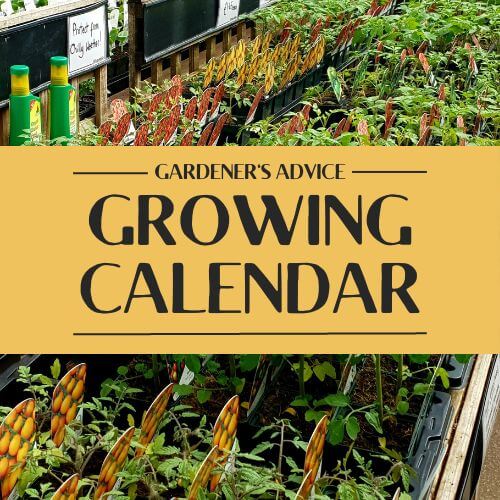Plant your potatoes soon
Posted By: rocket veg Category: Seasonal AdviceIf you fancy digging up some wonderful home-grown, delicious-tasting spuds in a couple of months, now is the time to get planting. Those seed potatoes that you bought a few weeks ago and set to ‘chit’ in a cool place should be developing sturdy pale shoots, a sure sign that they are ready for planting out. Gardening folklore has it that potatoes are traditionally planted at Easter, but given that the dates of the Easter weekend vary widely from year to year, here is a better indication of planting times to ensure a great crop of tasty spuds.
Are your seed potatoes ready for planting?
Before planting, seed potatoes should be ‘chitted’. (If need be, search out my previous article about this.) I bought my seed potatoes in early January, laying them out on cardboard egg trays which have been sitting on a table in a cool room in the hope that some sturdy shoots will develop – which they have. Keep an eye on them: if left, the shoots will put on rapid growth and are seriously weakened as a result, a bit like finding a forgotten potato at the back of your vegetable rack, the spindly white shoots trailing onto the floor! As we live in a milder part of the country, potatoes can be planted earlier than elsewhere - first early varieties in late March; second earlies in early April; maincrop spuds later that month. If you wish to grow potatoes in containers (large pots or special sacks), start a week or two earlier.
How to plant potatoes
There are several ways to plant potatoes. Try asking a couple of fellow gardeners what they go about it and you’re likely to get conflicting advice, but then that’s true of many aspects of gardening! I’ve tried various methods – digging a narrow trench and lining the base with rich compost and organic matter to give the developing tubers a boost; plunging a trowel as deep as possible into soft soil to create a hole and popping a spud in.
Growing potatoes is a great way of clearing a neglected piece of ground, as you’ll find that you dig the soil three times – once when you plant, once when you earth up, and once more when you dig up the crop and turn over the soil – by which time, all traces of grass and weed will be eliminated. The traditional way of planting potatoes is to dig a narrow trench approximately 6” (15cm) deep, then add a layer of well-rotted manure, compost, Comfrey leaves or similar material to feed the potato plants as the tubers develop. If you are planting a number of potatoes of several varieties, digging and preparing trenches is a time-consuming task and a simpler way is to space your seed potatoes out along a row, then use a trowel and make as deep a hole as possible in well-dug ground and pop a potato in. Over the years, I’ve tried various methods of planting and the resulting crop has been of a similar quality.
Everything changed a few years ago when I was lucky enough to acquire a clever gadget specifically devised for planting potatoes. It belonged to my father in law who grew up in a tiny village in the Northamptonshire fens and whose family had laboured on the land for many generations, working long hours in the bleak landscape for the wealthy owners of the farms in that part of the country. Various members of the family had also cultivated small parcels of land on the edge of the village, growing vegetables for their own use, and I guess that one of the family was clever enough to make a simple tool to take the backache out of potato planting. The design is simple and clever – two long handles at the end of which are two hinged metal ‘jaws’ which close to form a cup with a blunt bladed edge. Place a seed potato in position, push the cup deep into loosened soil, lever the handles apart and the potato is deposited in the ground. It’s a joy to use and I can plant a row of potatoes in a matter of minutes.
If you are limited for space, a small crop of delicious new potatoes can be grown in a suitable container. Simply fill the base with 6” (15cm) of rich compost and sit a couple of seed potatoes on this; then add layers of compost as new shoots appear, just covering these until the container is filled to the top – then let the foliage grow on.
Having got the potatoes in the ground - what to do next
Once in the ground, use a rake to draw a shallow ridge along the row above the potatoes. Over the coming weeks, the tubers will develop to the point when the tips of the foliage will appear along the ridge, always a satisfying sight. At this point, use your rake again and draw a layer of soil (‘earthing up’) over the foliage which not only protects the tender tips from late frosts, but will also encourage more spuds to develop along the length of the plant stem.
Growing potatoes where space is limited
If you are determined to get a small crop of delicious new potatoes but are limited for space, they can also be grown in a suitable container such as a large pot. Special ‘potato bags’ are also available. Simply fill the base with 6” (15cm) of rich compost and sit a couple of seed potatoes on this, adding layers of compost as shoots appear until the container is filled to the top. Once the flowers have appeared and the foliage wilts you will know the potatoes are ready to harvest.
The importance of spacing
Potatoes are hungry plants and if planted too close, the resulting tubers are likely to be disappointingly small. First and second early varieties should therefore be planted 12” (30cm) apart in rows spaced 24” (60cm); maincrop varieties – 15” (40cm) apart in rows spaced 30” (75cm). Once planted, cover each row of potatoes with a shallow ridge of soil, then stand back, admire your handiwork and think of those wonderful new potatoes that you will be harvesting in a few weeks’ time. If you have never eaten a potato lifted straight from the ground, you are in for a real treat!
Caring for your precious crop
The foliage of young potato plants is very susceptible to frost, so as soon as the tips of the plants show, cover with soil. This is called ‘earthing up’ and I’ll offer more advice on this in due course.







